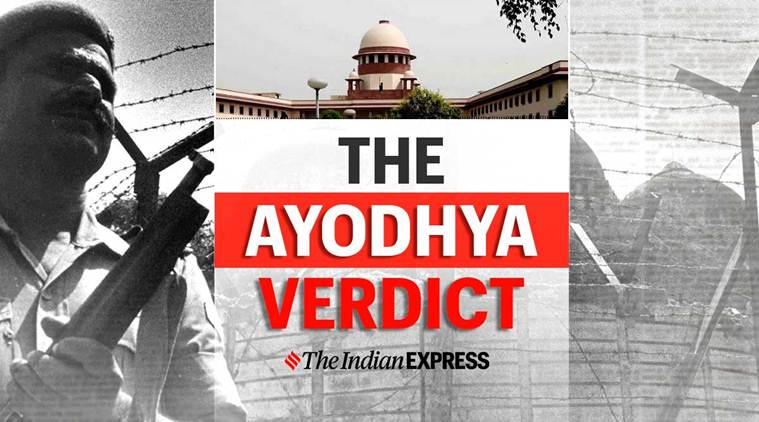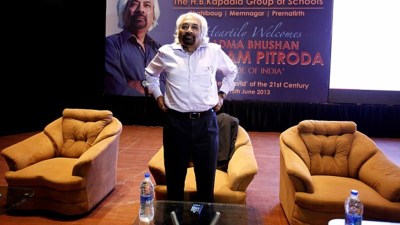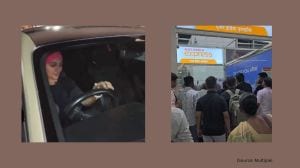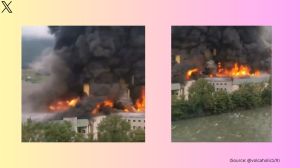- India
- International
Ayodhya land dispute case: What the verdict means to the litigants
Settling a dispute that began in 1885, the Supreme Court Saturday awarded the disputed Ayodhya site to the Ram Janmabhoomi Nyas Trust and a five-acre alternate plot to the Muslim side for building a mosque.

Settling a dispute that began in 1885, the Supreme Court Saturday awarded the disputed Ayodhya site to a new temple trust and a five-acre alternate plot to the Muslim side for building a mosque.
A five-judge Constitution Bench headed by Chief Justice of India Ranjan Gogoi said the Muslim side failed to prove exclusive possession of the inner courtyard where the central dome once stood. While the Hindu litigants were successful in proving their claim over the possession of the outer courtyard.
In a unanimous verdict, the bench ordered the Centre to set up a body within three months to hand over possession of the inner and outer courtyard to the Hindus. It said the Sunni Wakf Board would be granted five acres of land in a “suitable, prominent place in Ayodhya”.
“We have already concluded that the three-way bifurcation by the High Court was legally unsustainable. Even as a matter of maintaining public peace and tranquillity, the solution which commended itself to the High Court is not feasible. The disputed site admeasures all of 1500 square yards. Dividing the land will not subserve the interest of either of the parties or secure a lasting sense of peace and tranquillity,” the court ruled.

A brief reading of the SC judgment and what it means to the main parties involved.
Nirmohi Akhara
Was one of the three parties to receive an equal share of the 2.77-acre disputed land in 2010 ruling by the Allahabad High Court. On Saturday, the Supreme Court dismissed Nirmohi Akhara’s suit ruling it was barred by time limitation. The law of limitation extinguishes a party’s right to property if they do not file a claim within six years. The Nirmohi Akhara filed a suit in 1959 for possession of the entire property — both inner and outer courtyards arguing that they were disposed of the property in 1949. However, the Supreme Court asked the Centre to grant representation to Nirmohi Akhara in the body that would be set up by the Government.
“Suit 3 filed by Nirmohi Akhara has been held to be barred by limitation. We have also rejected the objection of Nirmohi Akhara and of the Sunni Central Waqf Board to the maintainability of Suit 5 which was based on their plea that Nirmohi Akhara is a shebait. Nirmohi Akhara‘s claim to be a shebait stands rejected. However, having regard to the historical presence of Nirmohi Akhara at the disputed site and their role, it is necessary for this Court to take recourse to its powers under Article 142 to do complete justice. Hence, we direct that in framing the scheme, an appropriate role in the management would be assigned to the Nirmohi Akhara,” the court ruled.
Sunni Waqf Board
The Uttar Pradesh Sunni Waqf Board suit was found to be within time limitation by the Supreme Court. Ruling that the disputed site is one composite whole, the apex court said the Sunni Wakf Board was unable to prove adverse possession. To make good their loss of Babri Mosque, the five-judge bench ruled that the wakf board should be granted five acres land in “suitable, prominent place in Ayodhya”.
” The Muslims have offered no evidence to indicate that they were in exclusive possession of the inner structure prior to 1857 since the date of
the construction in the sixteenth century…”
“…the entire structure of the mosque was brought down in a calculated act of destroying a place of public worship. The Muslims have been wrongly deprived of a mosque which had been constructed well over 450 years ago.”
“The allotment of land to the Muslims is necessary because though on a balance of probabilities, the evidence in respect of the possessory claim of the Hindus to the composite whole of the disputed property stands on a better footing than the evidence adduced by the Muslims, the Muslims were dispossessed upon the desecration of the mosque on 22/23 December 1949 which was ultimately destroyed on 6 December 1992.”
Shia Waqf Board
The Supreme Court dismissed their proposal that a temple can be built in Ayodhya and the mosque could be raised in Lucknow as it was time-barred. The mosque will be built in Ayodhya, in a “prominent place”, on a five-acre plot, the court said.
“There is an inordinate delay of 24964 days in the Special Leave Petition filed by the Shia Central Board of Waqf Uttar Pradesh against the final judgment dated 30 March 1946 of the Civil Judge, Faizabad. The delay has not been adequately explained. The Special Leave Petition is accordingly dismissed,” the court ruled.
Farooq Ahmad
His father was one of the original complainants against placing of idols of Lord Ram and other items of worship under the central dome of Babri Masjid in 1949.
The apex court accepted Allahabad High Court’s three-judge bench view that idols were placed inside the mosque. While Justices Sibghat Ullah Khan and Justice Dharam Veer Sharma agreed that the idols were placed on the pulpit inside the mosque for the first time that night, Justice e Sudhir Agarwal held that it cannot be proved that these were placed that exact day. Justice Agarwal cited evidence that even before December 22, 1949, there were idols and objects of worship at Ram Chabutra, on the outer courtyard. Ahmad died in December 2014 and was replaced by his youngest son Mohammad Umar.
“The exclusion of the Muslims from worship and possession took place on the intervening night between 22/23 December 1949 when the mosque was desecrated by the installation of Hindu idols. The ouster of the Muslims on that occasion was not through any lawful authority but through an act which was calculated to deprive them of their place of worship,” the court said.
May 08: Latest News
- 01
- 02
- 03
- 04
- 05





























